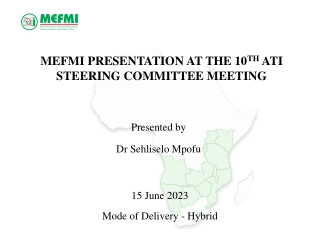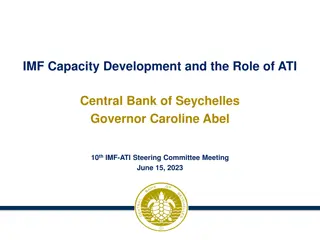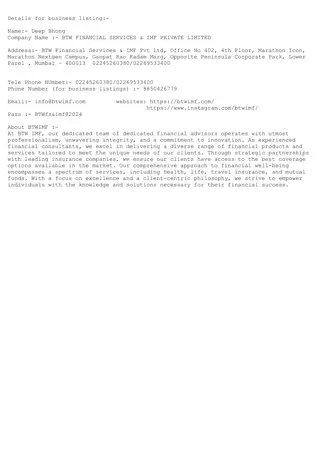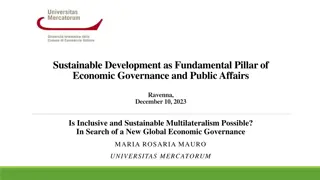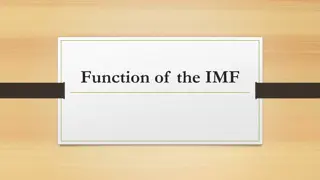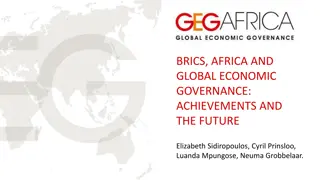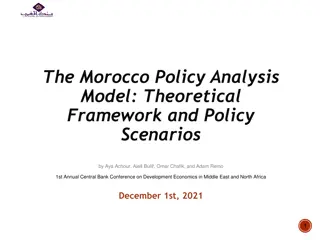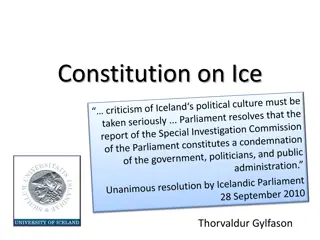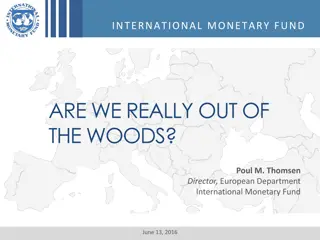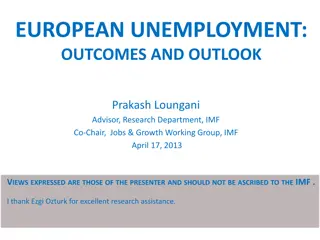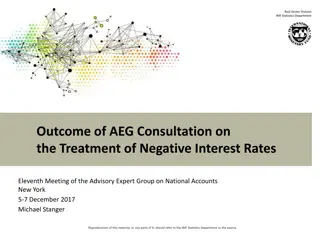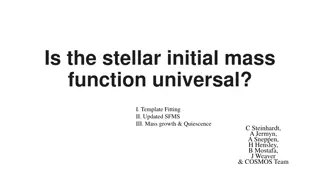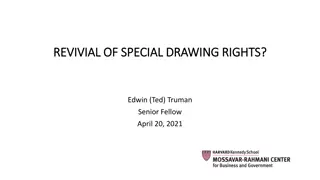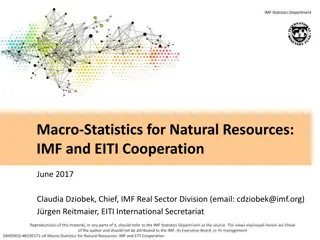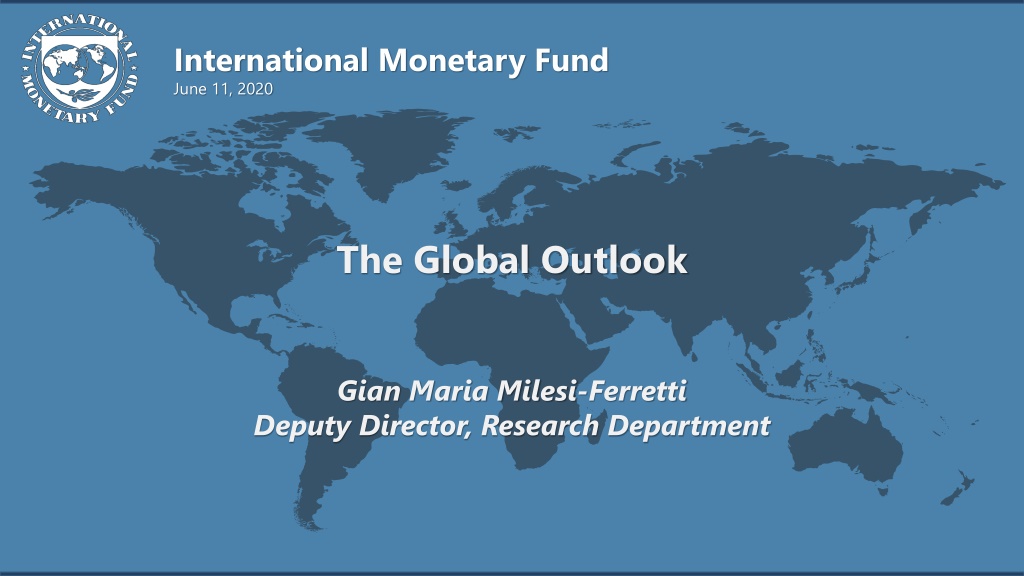
Global Economic Outlook and Pandemic Impact Assessment
"Explore the evolving economic landscape amid the pandemic based on IMF's latest data and projections, analyzing factors like GDP, trade growth, and COVID-19 cases. Stay informed about the changing dynamics impacting global economies."
Uploaded on | 0 Views
Download Presentation

Please find below an Image/Link to download the presentation.
The content on the website is provided AS IS for your information and personal use only. It may not be sold, licensed, or shared on other websites without obtaining consent from the author. If you encounter any issues during the download, it is possible that the publisher has removed the file from their server.
You are allowed to download the files provided on this website for personal or commercial use, subject to the condition that they are used lawfully. All files are the property of their respective owners.
The content on the website is provided AS IS for your information and personal use only. It may not be sold, licensed, or shared on other websites without obtaining consent from the author.
E N D
Presentation Transcript
International Monetary Fund June 11, 2020 The Global Outlook Gian Maria Milesi-Ferretti Deputy Director, Research Department
A Roadmap Where we started What has changed since then? 2020Q1 GDP releases (in the aggregate: weaker than the April 2020 WEO forecast) Higher-frequency indicators for Q2: PMIs, mobility indices, electricity consumption etc Economic policy decisions Dynamics of the pandemic within and across countries Pattern of lockdowns and re-openings Sources of uncertainty (pandemic) Evolution of virus Likelihood of a second wave in countries that reduced infections Effectiveness of tools to deal with recurrence/second wave (tracing, tracking, testing) Control of pandemic in countries with rising infections Regional differences Vaccine development and timing of diffusion Therapeutics Sources of uncertainty (economics) Extent of damage from the downturn (bankruptcies, permanent layoffs) Scarring Persistence of hit to demand from social distancing Need for and cost of resource reallocation across sectors Productivity hit from safety measures Shock to global trade and its macro implications Non-linearities (debt / external / currency crises) 10 -
April WEO projections Quarterly world GDP (2019:Q1 = 100; dashed lines indicate estimates from January 2020 WEO Update) Advanced Economies Emerging Market and Developing Economies, excluding China China 120 115 110 105 100 95 90 85 2019Q1 2019Q3 2020Q1 2020Q3 2021Q1 2021Q3 Sources: IMF WEO April 2020. 1
Trade growth has dropped sharply Imports (percent yoy) Exports (percent yoy) Other EMs Latam Euro area China GPM World Other AEs Asia excl Chn and Japan Japan USA Other EMs Latam Euro area China GPM World Other AEs Asia excl Chn and Japan Japan USA 7 7 6 6 5 5 4 4 3 3 2 2 1 1 0 0 -1 -1 -2 -2 -3 -4 -3 U Q1 Q2 Q3 Q4 Q1 Q2 Q3 Q4 Q1 Q2 Q3 Q4 Q1 Q2 Q3 Q4 Q1 Q2 Q1 Q2 Q3 Q4 Q1 Q2 Q3 Q4 Q1 Q2 Q3 Q4 Q1 Q2 Q3 Q4 Q1 Q2 2016 2017 2018 2019 2020 2016 2017 2018 2019 2020 Sources: IMF, World Economic Outlook; Haver Analytics; and IMF staff calculations. 6
The pandemic path: Cumulative confirmed cases AE: Cumulative confirmed cases (log scale; Last update: June 11) EMDE: Cumulative confirmed cases (log scale; Last update: June 11) Cases double every day every 3 days every 2 days Cases double every day every 2 days USA every 3 days BRA 1000000 1000000 every week every week RUS ESP ITA IND PER IRN TUR DEU 100000 100000 CHN EGY JPN IDN 10000 10000 KOR THA 1000 1000 VNM 100 100 0 10 20 30 40 50 60 70 80 90 100 0 10 20 30 40 50 60 70 80 90 100 Days since 100th confirmed case Days since 100th confirmed case Source: European Centre for Disease Prevention and Control. 2
The pandemic path: New confirmed cases AE: New confirmed cases (log scale; Last update: June 11) EMDE: New confirmed cases (log scale; Last update: June 11) 1000000 1000000 BRA USA RUS 100000 100000 New cases (previous 7 days) New cases (previous 7 days) IND PER IRN 10000 10000 ESP TUR EGY IDN DEU ITA 1000 1000 JPN 100 100 KOR CHN VNM THA 10 10 100 1000 10000 100000 1000000 100 1000 10000 100000 1000000 Total confirmed cases Total confirmed cases Source: European Centre for Disease Prevention and Control. 2
Industrial production and retail sales plummeted in April Retail sales (Volume index, December 2019 = 100) Industrial Production - Manufacturing (index; December 2019 = 100) 120 120 110 110 100 100 90 USA Germany Italy Korea Brazil Japan France Spain Thailand Mexico USA UK France Spain Indonesia Japan Germany Italy Korea Russia 90 80 80 70 70 60 50 Dec-2019 60 Dec-2019 Jan-2020 Feb-2020 Mar-2020 Apr-2020 Jan-2020 Feb-2020 Mar-2020 Apr-2020
PMIs: extreme weakness at the start of Q2but some recovery in May PMI: Manufacturing - output (index; >50 = expansion; sa) PMI: Services - business activity (index; >50 = expansion; sa) March April May 60 60 March April May 50 50 40 40 30 30 20 20 10 10 0 0 DEU RUS USA GBR ITA CHN JPN IND ESP BRA EUA FRA AUS GLOBAL GLOBAL USA CHN ITA GBR DEU RUS JPN IND ESP AUS BRA EUA FRA Sources: IMF, World Economic Outlook; IMF, Global Data Source; and Haver Analytics. 7
China has seen recovery in activity China: Real retail sales (y/y percent change, SA) China: Industrial production and fixed asset investment (y/y percent change) Catering services Goods IP Fixed asset investment 10 10 5 5 0 -5 0 -10 -5 -15 -20 -10 -25 -15 -30 19-Dec 20-Jan 20-Feb 20-Mar 20-Apr 19-Dec 20-Jan 20-Feb 20-Mar 20-Apr Sources: Haver Analytics; and IMF staff calculations. Note: Specific initial shock dates by event are: COVID-19 = Coronavirus Disease 2019 (2020Q1) and GFC = Global Financial Crisis (2008Q4). 9
Consumer price inflation has fallen Consumer price inflation (percent yoy, solid=headline, dotted=core) 6 Advanced economies Emerging markets 5.1 5 4 2.8 3 2.1 2 1 0.3 0 May-19 Jul-19 Sep-19 Nov-19 Jan-20 Mar-20 May-20 Sources: IMF WEO April 2020. 5
Reopening has gradually started in many parts of the world Oxford Stringency index (index, ppp gdp weighted average) 100 AFR APD ex China China EUR MCD WHD 90 80 70 60 50 40 30 20 10 0 Jan-20 Feb-20 Mar-20 Apr-20 May-20 Sources: Hale, Thomas, Sam Webster, Anna Petherick, Toby Phillips, and Beatriz Kira (2020). Oxford COVID-19 Government Response Tracker, Blavatnik School of Government; and IMF staff calculations. 8
Considerations for the forecast Size of lockdown effect How does the pandemic and lockdown interact with structure of the economy (share of employment and output accounted for by contact-intensive sectors)? Persistence of social distancing How long will fear of contagion and voluntary social distancing linger after lockdowns are lifted? Risk of recurrence / second wave Possibility of stop-start containment measures, prolonged uncertainty for firms and households Extent of scarring / shocks to productivity To what extent will furloughs and reduced work hours translate into job losses going forward? How much structural reallocation of workers will need to take place if distancing lingers? Will attrition of skills, sectoral and geographical mismatches between vacancies and unemployed workers lower the probability of being rehired quickly? Productivity effects from additional safety / distancing measures? Bankruptcies, balance sheet effects, debt overhangs Policy support How will it evolve during the recovery phase? 10 -


